Tall ornamental grass comparison for Screen
Like many of you, I have 6 foot cedar privacy fence between my back yard and my neighbors yards. IÂve been trying different ways to break up or hide the visual effect of those long flat expanses of fence. One approach IÂm trying is to put tall ornamental grasses in front of the fence.
The one on the left is Hardy Pampas grass ( Erianthus Ravennae). The one on the right is Giant Chinese Silvergrass ( Miscanthus Giganteus, or Miscanthus Floridulus) This pic was taken in August. This is the 3rd summerÂs growth of both of these. I planted about 6 very small single stem starts of the pampus grass more or less in a row about 6 or 8 feet long, and I put in 4 similarly small single stem starts of the Giant grass also in a row spread out over about 5 or 6 feet. This is the first year they are big enough to have a considerable visual impact in relation to the fence.
Although similar in size, the two have surprising difference in appearance throughout the year. I cut them both down to 1 foot around first of May. Then....
The Pampas grass shoots up pretty quick and by mid June is bushy and about waist or even chest high. Then it just stays like that, and fills out with more of those long green leaves until mid to late August. At that point these big long stems come shooting quickly up a good 8 to 10 feet high, and the plumes open and become gradually more fluffy over the following weeks till first hard freeze, when everything turns dry yellow and brown. That October snow storm brought most of them down this year. You can see theyÂre leaning a bit in this pic, so the snow just pulled em down, and IÂve now cut off the down ones, (the kids love to play with them) but the rest I think will look nice through the winter. I think as it fills out and has more old dead stems to hold everything upright at the base, the stems will not tip over as easily in future years.
The Giant Chinese Silvergrass comes up and shoots up about the same time around last frost, but it just keeps right on going till itÂs about 6 feet by mid June. Then for the next 2 months it mostly fills out at the level between 4 and 7 feet, and gradually gets only moderately taller. By middle of the summer the lower portion has the appearance you see here, just stems with a few dry yellowed leaves. The top portion seems more like field corn from a distance. It doesnÂt really change in appearance much from Mid June till first hard freeze. Shortly before hard freeze about half of these put out modest sized plumes, but smaller than the pampas and nearly still tucked into the upper leaves. I can see that perhaps by next year or the year after that, the Giant grass will simply be a solid 7 foot wall, tan on the bottom half, and green in the upper half, from mid June till hard freeze, and then all brown and yellow through the winter, till itÂs chopped down again the following spring.
The pampas grass must store energy in roots throughout the summer and then suddenly expends the stored energy in August to make those big stems and plumes. The giant grass must store energy all summer in the roots, and it lays latent there through the winter like a bulb or tuber, and then expends the energy suddenly at the beginning of summer to send out tall stems, atop which will be the greenery to develop energy for the next cycle. Viewed through the evolutionary lens, the Giant must be more concerned about getting out ahead of and above its crowded neighbors to grab sunlight. The Pampas must be less concerned about crowding and more concerned about getting its seed plumes high enough to catch the wind, or catch the attention of birds. I wonder if the giant propagates mainly by root spreading, and the pampas mainly by seed? Can anyone comment?
So if my objective is to hide the 6 foot fence completely from view, the Giant grass is clearly a better choice. However, I think if I had a long stretch of this stuff along my fence, my back yard would start to look like it has accidentally butted up against a sugar cane field. It would look more natural, but not really much more visually appealing than the 6 foot wooden fence. The pampas grass is much more visually appealing and changing throughout the season. I like the way the tall stems and plumes blow around and add motion and color in the fall and even winter. Over all, I like them much better.
IÂve just realized that if I use a little imagination, and in my minds eye, if I move the pampas grass in front of the giant grass, then I have a really terrific screen. The fence would be quickly and completely blocked in early summer by the tall giant grass, and the height of the leafy green part of the pampas grass is just about right to hide the brown stemy part of the giant grass, and at the end of summer the tall plumes will have a leafy green background. The Giant grass seems to need about 2 feet of width, and the pampas grass looks more like it wants about 3 to 5 feet, depending on whether IÂm counting all the space at the front where the leaves spray out. So all together IÂll need about 6 feet width from fence to lawn.
Now IÂve got a plan. Next spring, IÂll try digging out the back half of some of the pampas clumps and move them over in front of the Giant. And vice versa, IÂll chop out the front of some of the giant grass clumps and move them over behind the pampas grass. Then IÂll have to wait 2 more years to see how it all works out. Eventually I might need some kind of root barrier between the two, but thatÂs got to be several years out. IÂll cross that bridge when I get to it.
IÂve also been trying clematis, trumpet vine, and virginia creeper to screen or break up the fence, but IÂll save that for another post.
Have any of you had any luck with things to change the appearance of fences, do screens, or do you have any nice examples of use of these large ornamental grasses?
Bruce

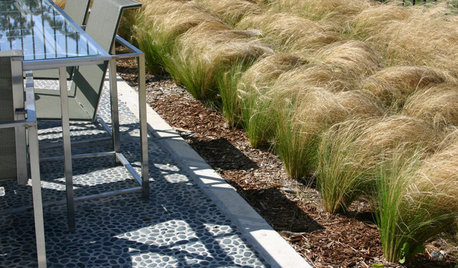
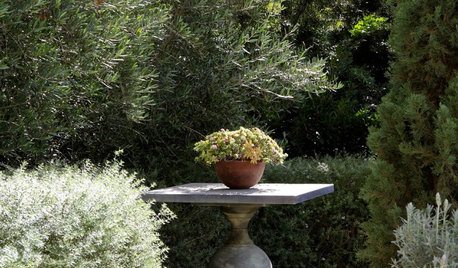

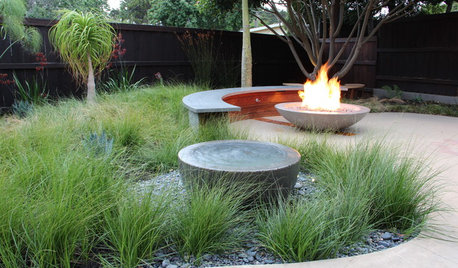
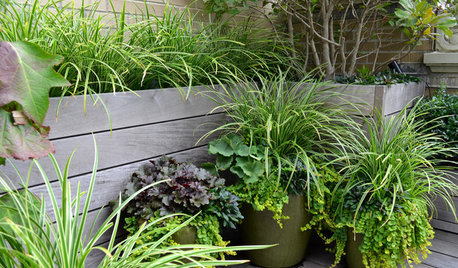
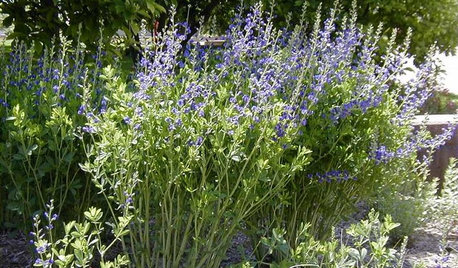









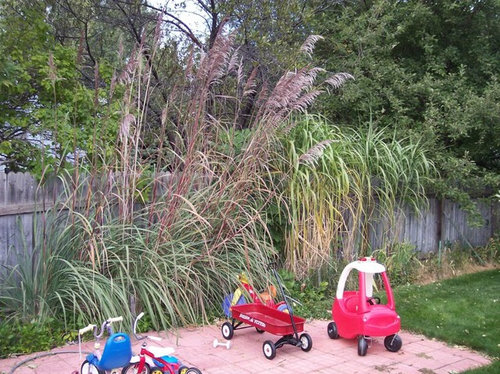

dirtshaman
dirtboy58
Related Professionals
Parole Landscape Architects & Landscape Designers · Matthews Landscape Contractors · Inglewood Landscape Contractors · Mesa Landscape Contractors · Nutley Landscape Contractors · Pleasant Grove Landscape Contractors · San Antonio Landscape Contractors · Secaucus Landscape Contractors · Southbury Landscape Contractors · Uxbridge Landscape Contractors · West Chester Landscape Contractors · Golden Valley Landscape Contractors · Frankfort Solar Energy Systems · Green Valley Solar Energy Systems · West Jordan Solar Energy Systemsion_source_guyOriginal Author